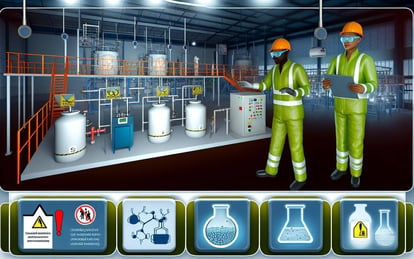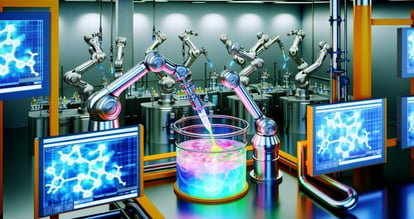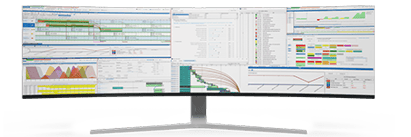Enhancing Safety: Application of Advanced Robotics in Hazardous Environments
Chemical manufacturing is a critical industry that produces a wide array of products essential for modern life. However, it also presents significant safety challenges due to the presence of hazardous materials and processes. In recent years, there has been a growing emphasis on leveraging advanced robotics to enhance safety in these environments.
This blog will explore the application of advanced robotics in hazardous environments within chemical manufacturing facilities and how it can improve safety standards. Additionally, we'll look into the integration of production planning software like PlanetTogether with various ERP, SCM, and MES systems to optimize operations and ensure seamless coordination between different processes.

Enhanced Safety Measures
Chemical manufacturing involves handling various hazardous materials, such as corrosive chemicals, flammable substances, and toxic compounds. The potential risks associated with these materials include fires, explosions, chemical spills, and exposure to harmful fumes. Traditional manufacturing processes often require human workers to operate in close proximity to these hazards, posing significant safety concerns.
Furthermore, the nature of chemical manufacturing processes often involves repetitive tasks, which can lead to fatigue and human error. In high-risk environments, even a small mistake can have catastrophic consequences, resulting in injuries, environmental damage, and costly downtime. Therefore, there is a pressing need to explore innovative solutions to mitigate these risks and improve safety standards in chemical manufacturing facilities.

Enter Advanced Robotics
Advanced robotics technology offers a promising solution to enhance safety in hazardous environments within chemical manufacturing facilities. By automating routine tasks and removing the need for human operators to work in dangerous conditions, robotics can significantly reduce the risk of accidents and injuries. Here are some key areas where advanced robotics can make a difference:
Material Handling: Robots equipped with specialized grippers and sensors can safely handle hazardous materials, such as corrosive liquids or toxic powders, without exposing human workers to risk.
Inspection and Maintenance: Robots equipped with cameras and sensors can inspect equipment and infrastructure for defects or leaks, allowing for early detection of potential hazards and preventive maintenance.
Emergency Response: In the event of a chemical spill or leak, robots can be deployed to contain the situation and mitigate the risk of exposure to harmful substances, minimizing the impact on human health and the environment.
Remote Monitoring and Control: Advanced robotics systems can be remotely operated and monitored, allowing operators to oversee manufacturing processes from a safe distance and intervene if necessary.


Integration with Production Planning Software
To fully leverage the benefits of advanced robotics in hazardous environments, it's essential to integrate robotics systems with production planning software like PlanetTogether and other ERP, SCM, and MES systems. Integration enables seamless coordination between robotics systems and other manufacturing processes, optimizing efficiency and ensuring compliance with safety protocols. Here's how integration can enhance operations:
Real-time Data Exchange: Integration allows for real-time exchange of data between robotics systems and production planning software, enabling better decision-making and resource allocation.
Optimized Scheduling: Production planning software can take into account the capabilities and limitations of robotics systems when generating schedules, ensuring optimal utilization of robotic assets while maintaining safety standards.
Predictive Maintenance: By analyzing data collected from robotics systems, production planning software can predict maintenance needs and schedule preventive maintenance activities, minimizing downtime and prolonging equipment lifespan.
Compliance Management: Integration with ERP and MES systems ensures that robotics operations adhere to regulatory requirements and safety standards, reducing the risk of non-compliance and associated penalties.
Advanced robotics technology offers immense potential for enhancing safety in hazardous environments within chemical manufacturing facilities. By automating risky tasks and reducing human exposure to dangerous conditions, robotics can mitigate the risk of accidents and injuries while improving operational efficiency.
Integration with production planning software like PlanetTogether and ERP systems like SAP enables seamless coordination between robotics systems and other manufacturing processes, optimizing operations and ensuring compliance with safety protocols.
As the technology continues to evolve, we can expect to see further advancements in the application of robotics for improving safety standards in the chemical manufacturing industry. Are you ready to take your manufacturing operations to the next level? Contact us today to learn more about how PlanetTogether can help you achieve your goals and drive success in your industry.